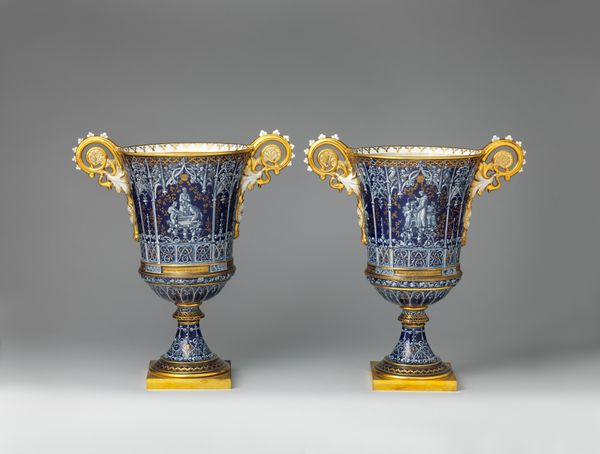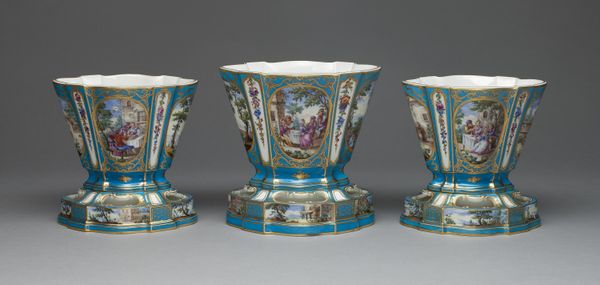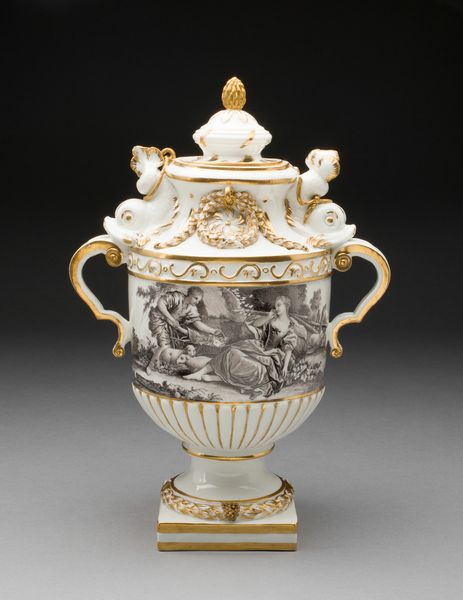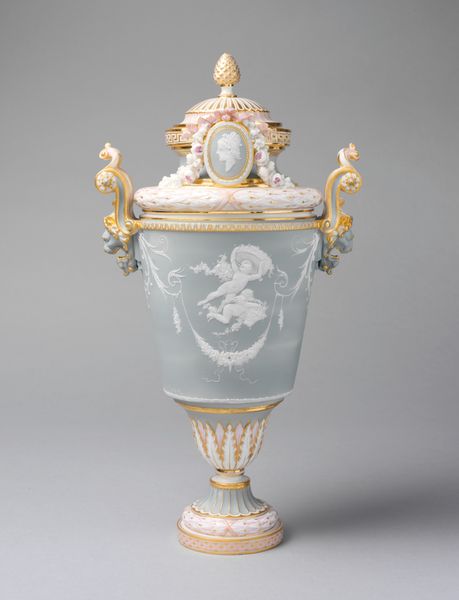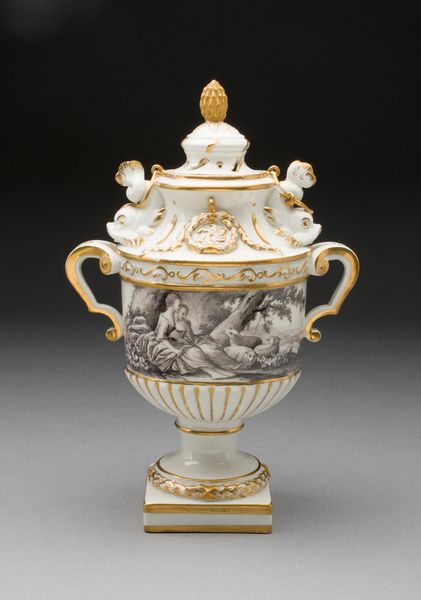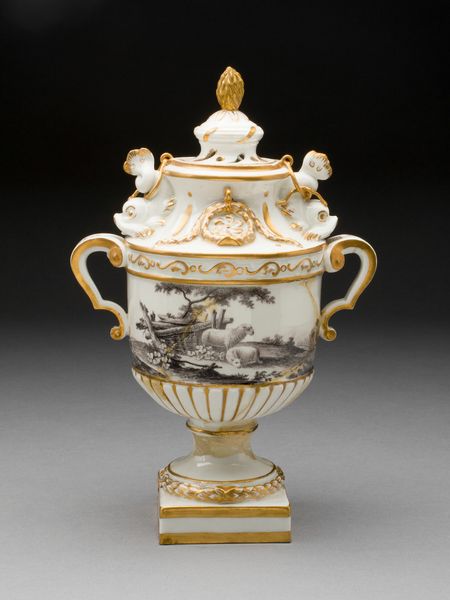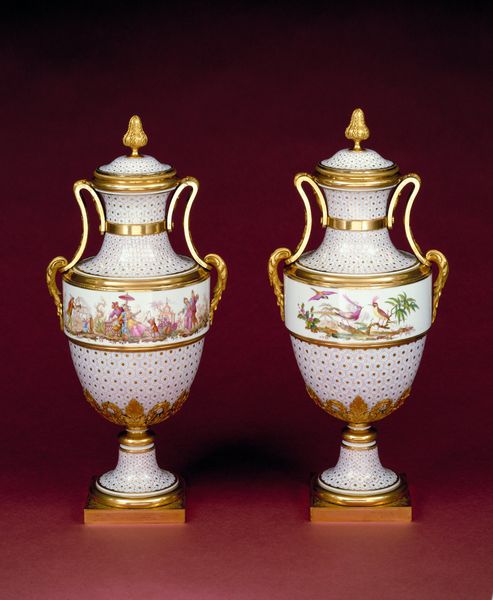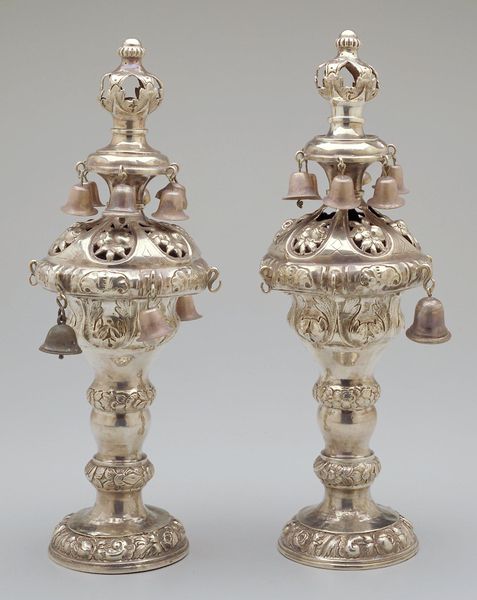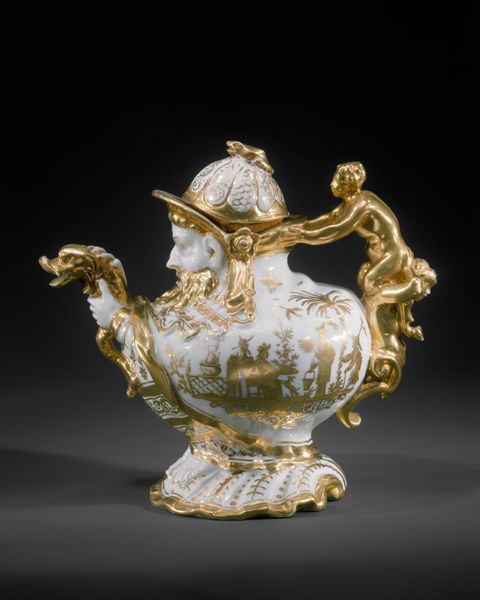
Vase with cover (one of a pair) 1784 - 1795
0:00
0:00
Dimensions: Height (with cover): 18 3/4 in. (47.6 cm)
Copyright: Public Domain
Curator: Before us we have a captivating example of late 18th century decorative art: a porcelain vase with cover, actually, one of a pair, crafted by the Real Fabrica de Buen Retiro between 1784 and 1795. It is now held in the collection of the Metropolitan Museum. Editor: My first thought? Elegance with a capital E. They're like fancy teacups for giants. Seriously though, there’s a subdued drama here; the classical form offset by those whimsical little landscapes. Curator: Precisely. Observe the structure: the neoclassical urn shape is adorned with rococo flourishes, specifically in the gilded leaf patterns. The porcelain, of course, provides the perfect canvas for both the blue floral sprays and the sepia landscape vignettes. Note how these landscapes, painted in a monochrome palette, create a narrative that encircles the vase. Editor: Absolutely. Those landscapes feel… intimate. Like someone took a miniature memory and encased it in porcelain. Are we seeing a nostalgia for some idealized rural past? And the gold leaf veining at the base—decadent. The piece is speaking of refinement but with this underlying… yearning. Curator: Interesting point. I'd focus more on the function of such ornamentation during the period. The vase exemplifies the confluence of artistry and aristocratic display. The symmetry of the design and its classical allusions reflect the Enlightenment's emphasis on order and reason. The landscapes suggest dominion, the ownership, perhaps, of an idealized countryside. Editor: Hmm. Or maybe a daydream about escaping court life! The artist might be playing with those symbols, though. Either way, it’s got soul. I wonder, did these things actually ever hold anything other than societal aspirations? Curator: Intriguing speculation. Such objects invite us to ponder their symbolic function in aristocratic society. They function as conduits to understand not only the visual language of the period but also its ideological underpinnings. Editor: Right. Well, I'm sticking with my initial hunch: these aren’t just pretty containers; they're coded messages disguised as decor. Maybe a desperate wish to feel free amongst the powerful. It’s always there in the details.
Comments
No comments
Be the first to comment and join the conversation on the ultimate creative platform.
